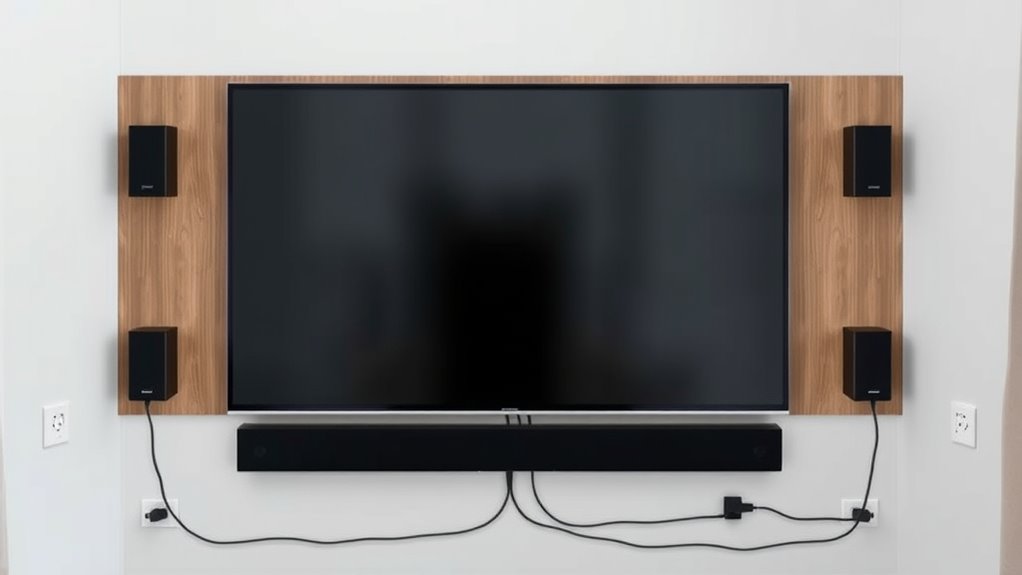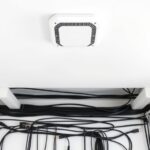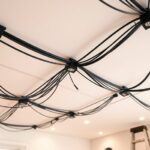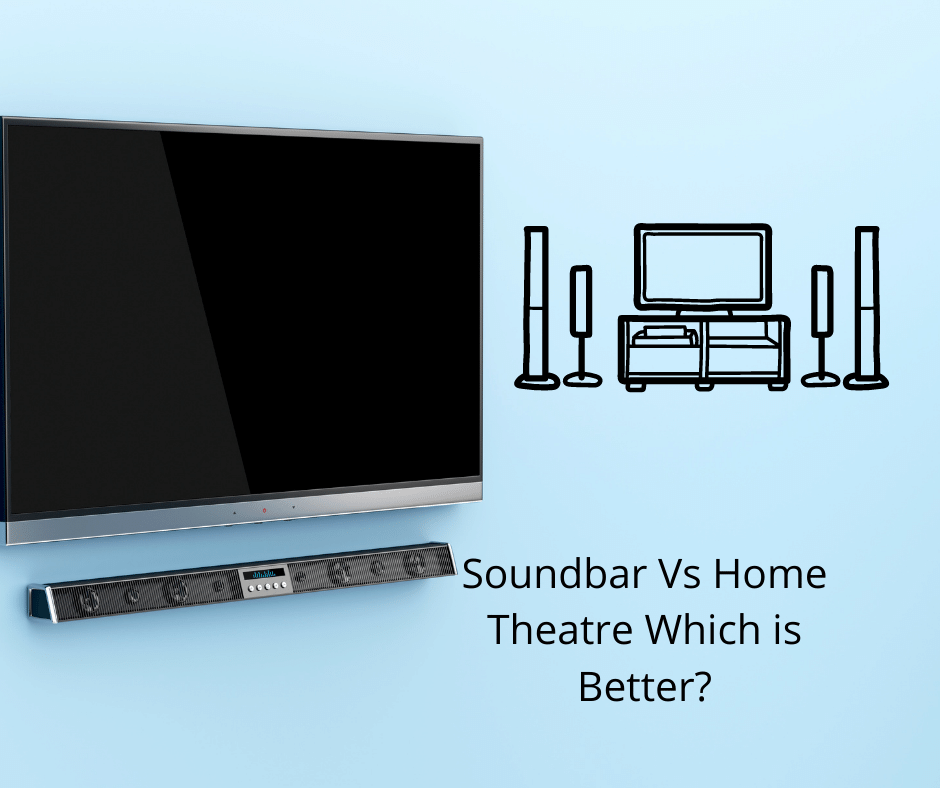To minimize cables in your home theater, start by evaluating all devices and removing unnecessary cords. Use shorter cables when possible, coil excess length neatly, and secure with cable ties or Velcro straps. Incorporate cable clips, sleeves, or conduits to bundle and hide wires along walls or behind furniture. Consider wireless options for speakers and streaming devices to reduce clutter further. For more tips on creating a streamlined setup, there’s plenty more to explore.
Key Takeaways
- Position devices close together to reduce cable lengths and minimize clutter.
- Use shorter, high-quality cables and coil excess lengths securely.
- Implement cable management accessories like clips, sleeves, and conduits for organization.
- Incorporate wireless technology to eliminate unnecessary cords.
- Label and regularly inspect cables for maintenance and safety.
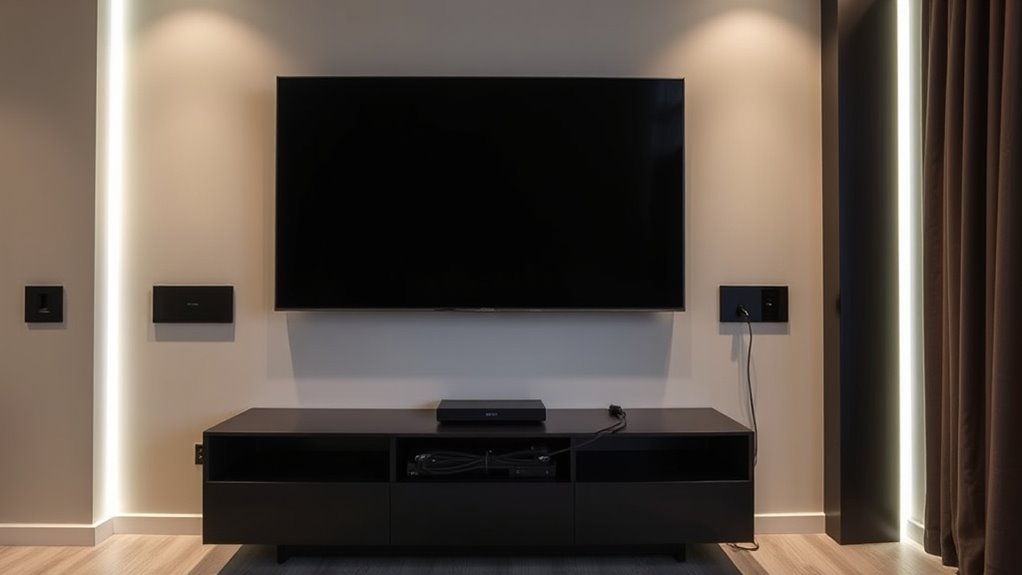
A cluttered home theater setup can be distracting and frustrating, but by minimizing cables, you can create a cleaner and more enjoyable viewing experience. The first step is to evaluate all your devices and identify which cables are essential and which are redundant. Remove any outdated or unused cords to reduce clutter immediately. Once you’ve pared down the number of cables, focus on strategic placement. Position your devices close together to shorten cable runs, which not only reduces clutter but also minimizes signal loss.
Streamline your home theater by removing unnecessary cables and positioning devices close together.
Next, consider using shorter cables whenever possible. Long cables tend to tangle and create mess, so measure the distance between devices carefully and purchase the appropriate length. If you already have longer cables, coil the excess neatly and secure it with cable ties or Velcro straps. This keeps the cables tidy and prevents them from tangling or hanging loosely.
Investing in cable management accessories can make a big difference. Cable clips and adhesive mounts allow you to run cables along walls, furniture, or behind equipment, keeping them out of sight. Cable sleeves or conduits are also effective for bundling multiple cables together, giving your setup a streamlined look. When securing cables, avoid stapling or pinching them, as this can damage the insulation and cause issues down the line. Additionally, understanding the basics of cable management can help you create an organized and safe setup. Incorporating wireless technology can also reduce the number of cables needed, which is especially helpful for eliminating clutter and maintaining a tidy space.
Organize your cables with label tags or color coding. This makes it easier to identify connections when troubleshooting or upgrading devices, preventing you from untangling the entire setup. Regularly check your cables for wear or damage and replace any compromised cords promptly. Maintaining a clean, cable-free environment not only improves the aesthetic of your home theater but also enhances safety by reducing trip hazards and preventing accidental disconnections. Moreover, integrating digital literacy programs can help users better understand and manage their home entertainment systems, leading to a more efficient and enjoyable experience. By applying these strategies, you’ll enjoy a sleek, clutter-free setup that lets you focus on your entertainment rather than wrestling with cords.
Frequently Asked Questions
Can Wireless Speakers Replace Traditional Wired Home Theater Systems?
Wireless speakers can definitely replace traditional wired home theater systems, offering a clutter-free setup and easy placement. You benefit from greater flexibility in positioning speakers without worrying about cables, making your space look neater. However, make certain your wireless speakers have reliable connectivity and good sound quality. While they’re convenient, some audiophiles might prefer wired systems for consistent performance. Overall, wireless options are a great modern alternative for a streamlined home theater experience.
What Are the Best Cable Management Tools for a Clean Setup?
Did you know that cluttered cables can reduce your home theater setup’s efficiency by up to 30%? To keep things tidy, you should use cable management tools like cable clips, sleeves, and raceways. These help secure and conceal cords, making your space safer and more aesthetically pleasing. Invest in quality tools, and you’ll enjoy a cleaner setup with easier access and fewer tripping hazards.
How Do I Hide Cables Behind Walls or Furniture Effectively?
Hiding cables behind walls or furniture keeps your space neat and clutter-free. You can run cables through wall channels or use in-wall cable management kits for a seamless look. If you prefer furniture, conceal cables behind or inside it, securing them with clips or cable sleeves. Always turn off power first, and consider hiring a professional for wall installations to ensure safety and code compliance.
Are There Any Drawbacks to Using Wireless Audio and Video Devices?
Wireless audio and video devices offer convenience, but they do have drawbacks. You might experience lag or latency issues, which can disrupt viewing or listening. Signal interference from other electronics or Wi-Fi networks can cause interruptions or degraded quality. Additionally, wireless devices often require batteries or regular charging, leading to potential inconvenience. Keep these factors in mind to guarantee your setup remains seamless and enjoyable.
How Can I Ensure Minimal Latency With Wireless Streaming?
Like a tightrope walker balancing carefully over a thin wire, you can guarantee minimal latency with wireless streaming by choosing high-quality, low-latency devices explicitly designed for real-time transmission. Keep your firmware updated, reduce interference by placing your router strategically, and opt for wired connections when possible for critical components. This careful approach helps your home theater perform seamlessly, much like a skilled performer executing a flawless act without missing a beat.
Conclusion
By streamlining your cables, you create a clean, immersive space that rivals the clarity of a maestro’s symphony. Just as Da Vinci sought harmony in his art, achieving a minimalist setup brings balance and elegance to your home theater. With fewer cables cluttering your space, you’ll enjoy a seamless viewing experience—free from distractions. Embrace simplicity, and let your home theater be a masterpiece of design and function, much like the timeless works of the great masters.
